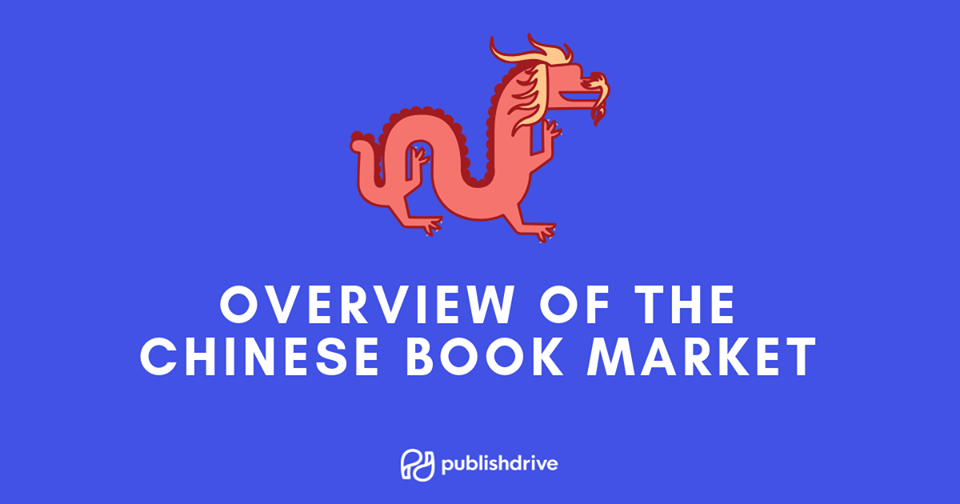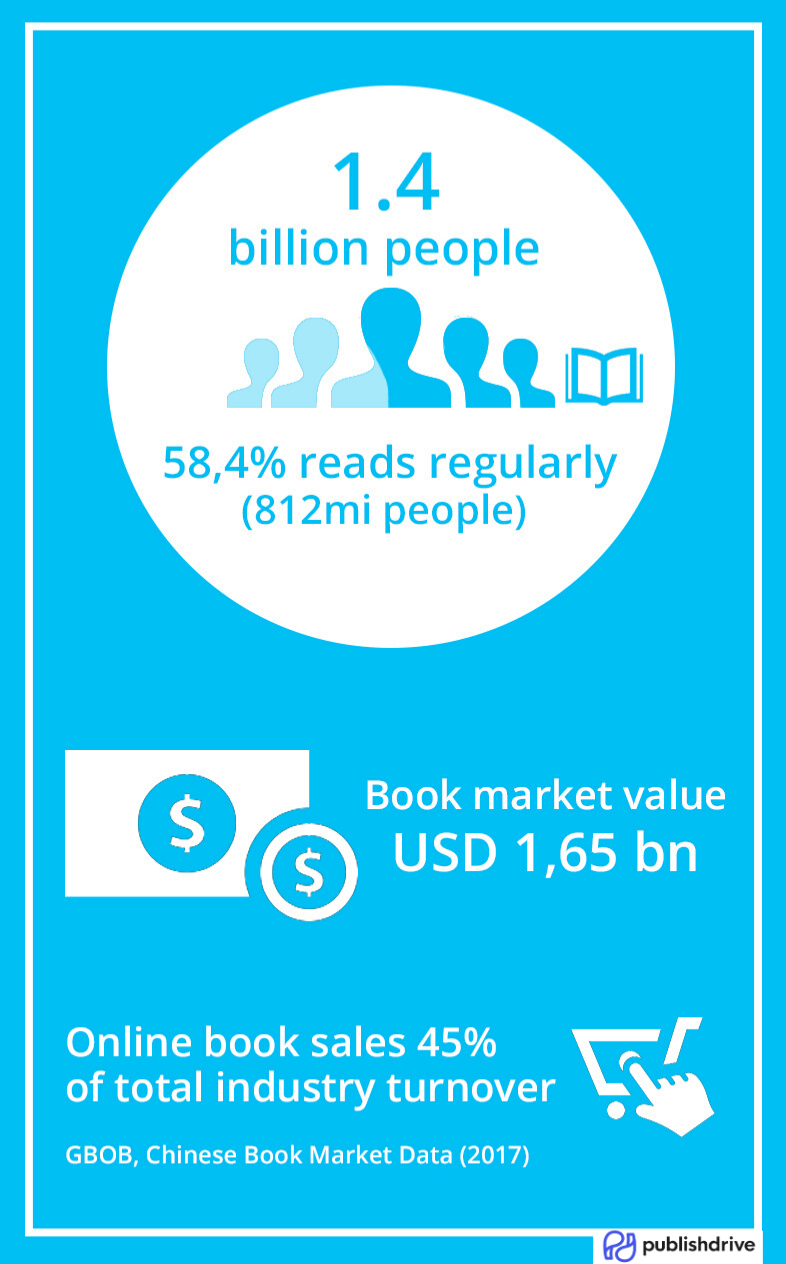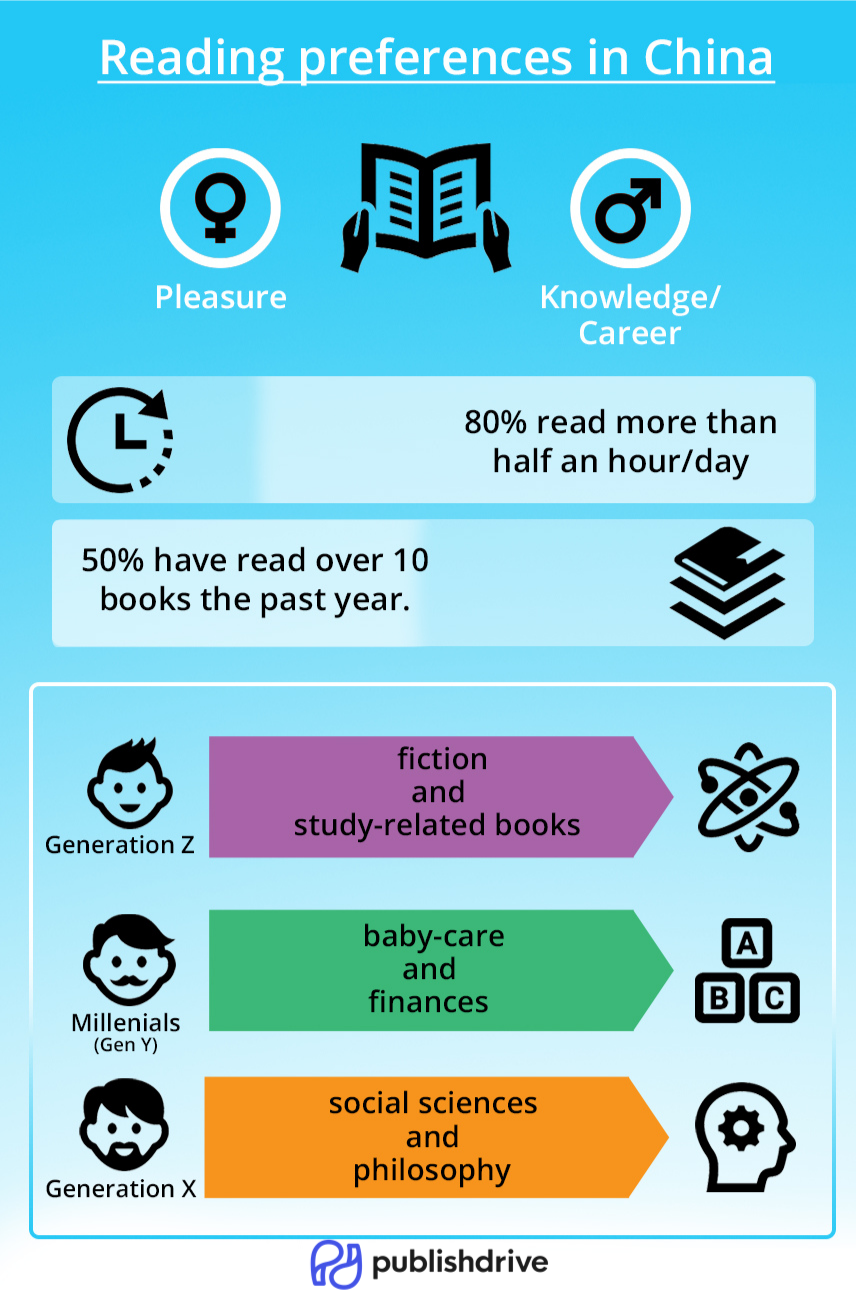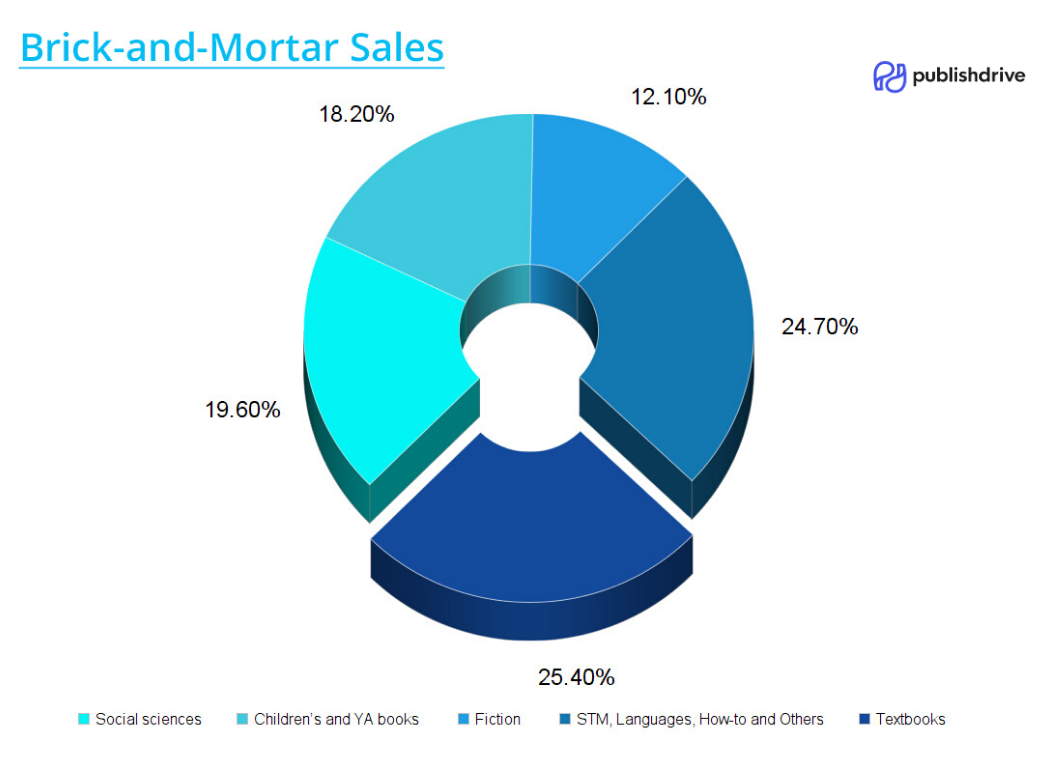Overview of the Chinese Book Market

PublishDrive signed a contract with retail giant DangDang, often dubbed as ‘the Chinese Amazon’. To celebrate this partnership, here is our analysis of the Chinese book market. We are grateful for the data shared by German Book Office Beijing, information shared with us by our new partner store, and other sources credited below.
With almost 1.4 billion people, China is the biggest market in the world. Its power and influence have for a long time been disregarded by Western publishers. However, more and more people discover the Chinese market and the possibilities of publishing in China could bring them. This article is aiming to provide an overview of the Chinese book market, analyze the trends and discover some opportunities that could benefit authors and publishers.
Demographics
As summarised in Foreword Reviews, China’s population is not only the largest of the world but is undergoing major changes. These changes make it even more attractive. Sociological trends, just as the fast-growing urbanization and the strong economy result in a strong and educated middle class. These people are eager for Western titles but also cultivated in Chinese literature. The recent abandonment of the one-child policy is expected to further boom the population. The sociological findings are also supported by numbers, as can be seen in the next paragraph. To sum up, these socioeconomic changes make China one of the most sought-after markets today.
Chinese book market in numbers
Although the Chinese book market is usually quite secretive when it comes to its numbers, valuable fresh data has been provided for last year’s Beijing Book Fair. OpenBooks, the Chinese equivalent of Nielsen BookScan has released some current numbers. They estimate the total volume of the book market to be between 20 and 23 billion USD in 2016. The total turnover is increasing by an average of 0.3% yearly. Online book sales have accounted for 45% of total industry turnover (GBOB, Chinese Book Market Data (2017)).
According to data by Chinese Academy of Press and Publication, 58.4% percent of the population regularly read Chinese language books. This amounts to around 812 million people altogether. Increasing the percentage of readers is part of the state agenda. The Chinese People’s Government is promoting reading with nationwide campaigns, reaching up to 800 million people at a time.
The three most important distributors are DangDang, Amazon China, and JD. All three of them are committed to offering a safe and protected environment not only to their readers but to their publishers. They are using different kinds of DRM technologies and offering books through different channels and on different devices to fight ebook piracy.

Reading preferences in China: Who are the readers
While there are no definite numbers regarding the number of readers in China, Amazon China has run a survey among its users in 2016 to measure reading preferences. (All numbers in the following are from the amazing What’s on Weibo blog. Thank you for your hard work of translating the original study!) They have received answers from more than 11,000 participants from 500 Chinese cities. According to the results, 80% of the participants have read more than half an hour every day. 50% of the participants have read over 10 books the past year.
Another interesting finding of the same survey is that women tend to read more for pleasure, while men read more for knowledge acquisition or career planning. Generation Z prefers (not so surprisingly) fiction and study-related books. Millenials read about baby-care and finances, while people born between the sixties and the eighties prefer social sciences and philosophy.

What gets published
The Chinese publishing sector is regulated by the Publicity Department of the Communist Party of China. According to the Chinese Book Market Data (2014), there are currently around 580 official publishing houses in China, all of them state-run. While private publishers are officially banned, some ‘culture agencies’ work as quasi-publishers. These companies are working in close cooperation with state-approved publishers and using their ISBN and names to reach the market. In addition to official and private publishers, subsidiaries of international companies (like Pearson, Elsevier, Hachette or Springer) are also present in the market.
Interestingly, while publishing is an ideologically important sector, the government has decided in 2001 that all publishing houses should operate according to market rules and work as commercial enterprises.
According to the Chinese Book Market Data (2017), these 580 publishers produced more than 475,768 titles in 2015. More than half of these were new titles. Interestingly, the best selling 68 titles account for more than one million copies printed.
Most popular genres in China: What do people read
When it comes to popular genres in China, the list is quite different when it comes to brick-and-mortar sales and sales in online stores. The following data is courtesy of Chinese Book Market Data (2016).
For brick-and-mortar sales, Textbooks (25.4%) are followed by Social sciences (19.6%) and Children’s and YA books (18.2%). Fiction is slightly behind with 12.1%, and STM, Languages and How-to books are closing the line.

When it comes to online book sales, Social sciences are leading the way (26.6%), closely followed by Children’s and YA books (21.9%). Fiction (13.4%), STM (10%) and Textbooks (9.8%) are fairly behind.

The Chinese Book Market Data (2017) lists the bestselling fiction and non-fiction titles of 2016 in brick-and-mortar bookstores: see in the following.
More recent data is always available on the OpenBook website. They collect sales data from all major retailers and provide publishers and booksellers with detailed and accurate reports. The bestseller list in fiction, non-fiction and children’s books is freely available for anyone in English. (All data and reports are available in Chinese.)
Fiction
Fiction is lead by Dispel Melancholy Grocery Store, a mystery book by Japanese author Keigo Higashino. Only four out of the ten titles are by Chinese authors. Other foreign names include Khaled Hosseini and Scottish teacher and young adult author Claire McFall. According to the New York Times, genre fiction is also increasingly popular: crime, romance, and wuxia.
Non-fiction
When it comes to non-fiction, the only non-Chinese author to make it to the top ten was Helene Hanff with 84, Charing Cross Road. Yes, a 1970 memoir describing the relationship between a bookseller from London and an American writer. (Can’t place it? Check out the movie with Anthony Hopkins.)
Children
Out of children’s books, only Charlotte’s Web by E. B. White and The Little Girl at the Window by Tetsuko Kuroyanagi had made it to the top 10, if we are only looking at titles by non-Chinese writers. This is not surprising if we take into account the recent analysis by Publishers Weekly. They point out, that the two-child policy has resulted in a sudden increase of interest in children’s and YA titles, with publishers more interested in niche books than worldwide hits and classics. It is important to remember, however, that the Chinese government wishes to decrease the number of Western titles translated and published for children. They aim to reduce the impact of Western values on their under 14s.
When it comes to native authors, the Chinese children’s books section is dominated by 雷欧幻像 (Leon Image).
Foreign rights
In overall, the Chinese Book Market Data (2017) points out that in 2015, publishers sold rights of 15,458 foreign titles in China. One-third of the rights came from the USA, 2,802 from the UK. Other important countries include Japan and South Korea.
Chinese ebook market
While online book sales were at around 44% in 2015, this doesn’t mean that e-publishing is blooming. It only means that people have started to change their preference from brick-and-mortar stores and stationery shops, where the majority of the book business was conducted previously.
According to the Annual Survey of China’s Digital Publishing Industry (quoted by Chinese Book Market Data (2017)), revenue of digital publishing was 440.39 billion yuan (around 69 billion USD) in 2015. This revenue does not only include ebooks but digital newspapers, blogs, online music, and animation. The biggest portion came from “mobile publishing” (16 billion USD) and games (13 billion USD).

According to the previously mentioned survey conducted by Amazon in 2016, 84% of people participating have read books digitally. Bear in mind, however, that the survey was conducted by Amazon, so we can’t assume that this is true for everyone. They have also found that more people are reading on Kindles than on smartphones; I would take this result with a grain of salt.
The Chinese Book Market Data (2014) points out, that widespread piracy of ebooks has made most major publishers cautious; many bestsellers are not made available in ebook format at all. All major distributors already have implemented DRM, so this might change in the close future.
Most popular Kindle books of 2016 in China: original or translated titles?
Amazon China has also published the most popular paper and Kindle books in 2016. Looking at the charts, it seems that only 3 of the top 10 paperbacks and only one book among the top 10 Kindle books were Chinese originals. All other books on the bestseller chart were either Japanese or English translated works.
Mobile reading
But maybe the most popular books are not even books at all?
It is possible that Chinese books don’t populate Kindle’s bestseller lists because readers turn to other channels for their daily fix. The majority of young readers turn to China Reading, a company created by merging Tencent Literature and Shengda Literature in 2015.
China Reading is not only an authorized digital reading platform with social features. They are a giant organization created to cultivate and promote Chinese IP, including managing film deals. They currently have about 10 million digital works of 200 content types from 4 million authors.
Origins of mobile reading
From a Western point of view, it might seem surprising that mobile phone literature was a prominent way of reading in China even before the age of smartphones. But if we look at the characteristics of Chinese writing, it is not that surprising. Chinese writing is based on logograms (hànzì): words can often be written by only a single character. So while the length of a traditional text message (160 characters) is only a few words if you speak German or Hungarian, it can be enough for a poem or a short story in Chinese.
While the writing system makes Chinese an ideal language for short literature, the Irish Times points out that mobile reading has gained popularity as it was a way to avoid censorship. (This is probably no longer the case, as the Chinese government has made great progress over the last 15 years in tightening the rules regarding internet and social media.) As the popularity of mobile reading grew and has gained an audience always eagerly awaiting the next chapter (sometimes even texting back with plot suggestions), bigger publishers have also joined the field.
Today, mobile literature has two main sectors. Books that were written in a traditional format but are also distributed via text messages; and books that were specifically written to be read as text messages.
How to publish a book in China?
Just upload it to PublishDrive! Our Chinese partner will deliver it to the readers. We believe that the Chinese market will bring our authors to a previously uncharted territory for foreign indie publishers. We are really looking forward to seeing what this cooperation will bring.